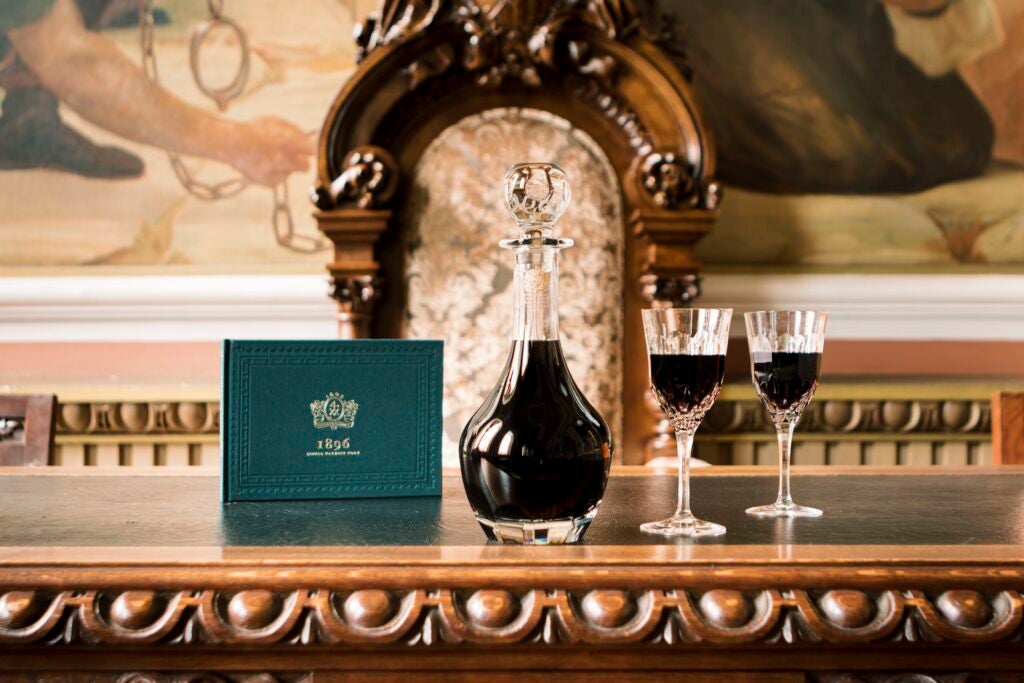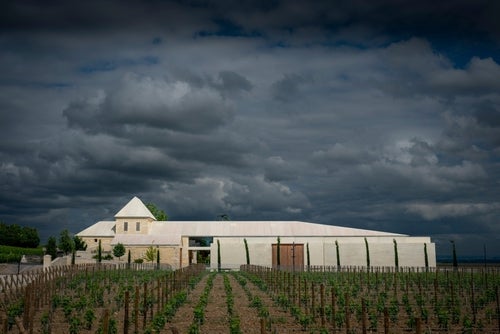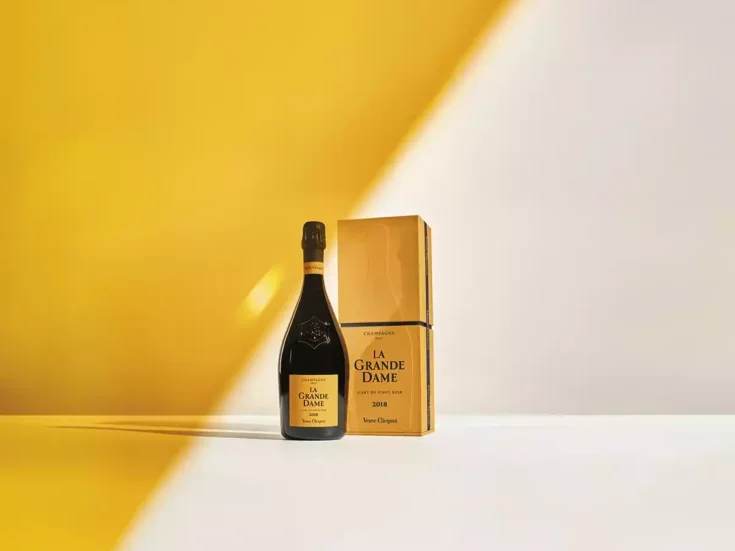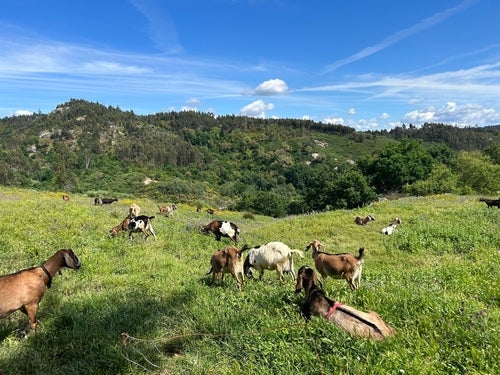
A style of wood-aged Port that has always been prized in Portugal, Colheita is at last earning the respect it deserves in the rest of the world, says Richard Mayson, after a tasting shared with Simon Field MW and Andrew Jefford.
For scores and detailed notes on all 32 wines included in the tasting, subscribe to The World of Fine Wine.
Of all the different styles and categories of Port, colheita is still the most misunderstood. The word translates from Portuguese as “harvest,” and some Port shippers use the English term on the label, which perhaps adds to the confusion. The fact that there is a date on the label (the year of harvest) leads some people toward Vintage Port. But colheitas are shaped by time spent in wood. Unlike a Vintage Port, which spends around 18 months in large wooden vats before bottling, a colheita must be aged for a minimum of seven years in order to qualify. As we found, however, from this extensive tasting of colheitas currently on the market, there are plenty of wines currently available that have been aged for 30, 40, or 50 years or more. This extended maturation in small wooden casks (usually well-seasoned lodge pipes with a capacity of around 600 liters) turns the wines toward oxidative Tawny in style. As Andrew Jefford stated in his conclusion, “This fascinating and, in many ways, outstanding tasting […] has changed the way I look at colheita Ports. Prior to today, I thought of them as a kind of alternative iteration of Tawny Port; more characterful, perhaps, than the ‘years-of-age’ blends (10, 20, 30, 40, and now 50) but perhaps less subtle and orchestral. Another way of looking at them was as ‘alternative Vintages’—Vintage Ports that had spent most of their lives in cask rather than bottle. Both, I now think, are misguided approaches. I will henceforth think of them as Ports tout court.”
This is the correct way of thinking: Colheita deserves to stand on its own as a valid category of Port in its own right. The wines have long been appreciated in Portugal, and for many years they were the preserve of the so-called Portuguese shippers. In the days before we had supermarkets, old bottles would stand upright on prominent display in the window of the rather grand grocer’s shops in Lisbon and Porto, lending prestige and gravitas to the retailer. In the 21st century, the division between “Portuguese” and “British” shippers has rather broken down, with the latter embracing colheita, and many of the former embracing Vintage. Graham’s broke the mold in the 2000s, with the launch of single-harvest wines, and Taylor’s led the charge with the takeover of Wiese & Krohn (with its huge stock of old colheitas) in 2013, then began releasing “single harvest” under the Taylor label. But the names that I recall from those old-fashioned grocer’s shops were Niepoort, Dalva, C da Silva, Royal Oporto, Burmester, Barros, Cálem, and Kopke. The latter three now form part of Spanish-owned Sogevinus, which lays claim to an impressive stock of wood Port, both aged Tawny and colheita. Sogevinus winemaker Carlos Alves is quite specific about the style of wine that has the making of a good colheita. “There are three important characteristics: natural acidity, sweetness, and the body and structure of the wine,” he says. Initially, “it is similar to a good LBV or Vintage but with a different aromatic profile, since LBVs and Vintages tend to be more expressive than colheita.” Another Port producer was more straightforward, describing the choice of wine destined for colheita as “the second best after that put aside for Vintage.”
It is after about seven years that a second selection takes place. The wine will either be blended into a Tawny lote (in which case it will lose its identity) or kept aside as a potential colheita. Simon Field MW portrayed the effects of the aging process with an eloquence that we found in many of the wines: “The color darkens, the angels take more and more of their share, and the volatility, while increasingly evident, is tamed by the texture and by the sugar. Tension between the privileged components comes into play—intriguing in a category that one might have previously associated with mellow fruitfulness and the rigors of indolence. Expectation and logic are challenged at every turn.”
This aging process is potentially fraught and one that requires careful and determined stewardship. Colheitas are tasted regularly, then racked and topped up periodically to replace what has been lost by evaporation (the so-called angel’s share). The topping-up will be with a wine from the same colheita or harvest, often from a garrafão—a 5-liter glass carboy—to retain more freshness. Without recourse to regular refreshing, a colheita will start to look tired, unbalanced, and even oxidized. Excessive concentration of natural sugars makes the wine cloy, tasting ponderous and unbalanced on the finish. Many older colheitas also take on a lifted, volatile character, described rather poetically in Portuguese as vinagrinho (“little vinegar”). Some volatility is inevitable in an older wine and is no bad thing. It serves to lift the aromas and helps the wine sing from the glass. Too much balsamic character, however, is a negative, and I awarded my higher marks to those older wines where I felt the vinagrinho was in check. Where to draw the line is a matter of personal opinion: Andrew Jefford noted “soprano aromas” in one of his high-scoring wines.
Colheita: Age before beauty
The 32 wines tasted here range in age from 2014 to 1896—an array that would be hard to replicate in any other category, with the exception of colheita and frasqueira (Vintage) Madeira. The spread of 116 years begs the question of just how old a colheita should be to be at its best. With the exception of a 2005 from Cálem, a 2007 from Burmester, and a white 2007 colheita from Dalva, all the wines that averaged a score over 90 were more than 20 years old. My feeling is that some wines here had been bottled too early and had not yet taken on the shape and character of colheita. Andrew Jefford echoed this when he wrote, “As a general rule, the older they get, the more interesting and intricate they become, but we could also see excellence at different age brackets. Probably, though, you need to seek out 20-year-plus wines to get the very most out of this category. Even the 15-year-old wines were still finding their way.”
That begs the next question: Is there (as with an aged Tawny) a perceived sweet spot at, say, around 20 or 30 years old? The answer here is that these wines are individuals. Our top-scoring colheita was a spellbinding 1896 from Taylor, followed closely by a 1937 from Kopke and a 1974 from Barros. But some older wines were marked down for their pronounced rancio character, for having too much volatility, or because they were perceived as drying out on the finish. Just as when it comes to judging a finely tuned aged Tawny, overall poise is everything.
When it comes to colheita, we were agreed that there is not much point looking for the hallmark of a particular vintage (though I did note the firm tannins in a 1983, true to the character of that vintage). Andrew Jefford made the point that “if you were to ask me whether I would prefer a great Vintage [Port] of the ’60s or ’70s, or a great colheita from the same decades, I would now opt for the colheita”. There is a pattern to these wines, but it is more about the house, their duty of care and attention to detail, sometimes over a number of generations.
It is fair to say that this tasting brought out a new vocabulary in our tasters—perhaps one more akin to Vintage Madeira than to most Port. Jefford described the 1896 colheita from Taylor’s as being “up there with the best Madeiras.” Like a Vintage Madeira, there are two dates on the label: the date of harvest and the date of bottling, which indicates just how long the wine has been in wood. Sometimes the same wine can be subject to more than one bottling. In bottle, and on opening, colheita Ports behave like Vintage Madeira. Provided the cork remains sound, these wines won’t change much or deteriorate in bottle, but don’t expect the wine to improve once starved of the oxygen that shaped them. Once a bottle has been opened, however, an old colheita can be kept (preferably in the fridge) for a few months without showing any clear signs of deterioration. This means that you can relive the experience of tasting a fine colheita Port time after time; and these are gloriously meditative wines. Despite all the comparison with Tawny Port, Vintage Port, and Madeira, at the end of this tasting we were all agreed that colheita Port is a magnificent category that thoroughly deserves to stand proudly in its own right.
The Top 5: The best of Colheita Port
Taylor’s Single Harvest Port Douro Valley Portugal 1896 |98

SF | A magisterial depth of color at the core; mahogany at its best, and the rim a halo of deep green, recalling Madeira of a similar age. The aromatics are not dissimilar either, all informed by an allusive acidity and a core of fruit that has evolved with patient dexterity. Incredible texture and weight… The angels have taken their share, after all, and what is left is a core of unadulterated quality—the essence, as others may say. A rare and poignant gift, to be cherished and to underline the great aging potential of these exceptional wines. | 95
AJ | Well, here we are: a 19th-century wine. Dense ebony in color, though still translucent, which has somehow survived long enough so that we can see a sample. Mindful of the privilege, we sniff. An essence of time: treacle, leather, woodland in winter, pipe smoke, burned raisin, tatin-burned apples, old medicine jars, old rooms, old books, old libraries. Compelling and close-textured, almost creamy. Magnetically attractive, age aside. A tiny sip: an explosion of flavor. Acids and extracts are evident, yet nothing is austere or brutal; the raisin sweetness conciliates. The wine powers down on the tongue, almost scouringly; lingers and lingers, sending grappling hooks into your sensual apparatus. Of course, you don’t spit but swallow, yet the swallow is almost a metamorphosis in its own right, in that the wine seems to melt into your tongue and your mucous membranes. This is enormously better than all of the 19th-century table wines I have tried, and up with the best Madeiras. If it is still commercially available, bravo. The score is almost irrelevant. 2024–40. | 98
RM | Deepest mahogany in hue, with an olive-green rim. Wonderfully lifted and scented on the nose, the quintessence of colheita, with its profound figgy intensity and concentration. Words fail me. Similarly and gloriously intense on the palate, with spellbinding textural depth and richness, dried figs, spice, and old saddle leather leading to a lovely, long, reassuring, warming finish that goes on for ever. A wine to sip and with which to meditate, and in this context, there can only be one mark. | 100
Kopke Colheita Douro Valley Portugal 1937 (20% ABV) |97
SF | Burnished walnut color, lignified, discreet, still deeply pigmented after all these years. Oxygen held in check somehow. How? Quality of oak… intensity of fruit… the clarion call of piercing acidity… the gentle tannic balustrade…? All of the above, surely, all reverberating to the sound of a finely tuned nonagenarian who refuses to leave the dance floor. Composed and lucid; energetic and focused. Be prepared for a testing discussion, if you take on this one. | 95
AJ | Back to the ebony here; dark, glinting, and brooding. The nose is almost oily, smooth with the grease of the years, though there is treacle and syrup of raisins beneath to lend it dimension and depth of field. Impressive and … old! On the palate, it is very sweet, very acid, very concentrated and scouring, laden with sugars and extract; very everything, truly an essence from a dark decade. I feel guilty spitting; this should only be swallowed: the preciousness of these messages from the past. Critically speaking, perhaps the most useful thing to say here is that anyone who procures a bottle and opens it with her or his oldest friends will not be disappointed; it is riveting, spellbinding stuff. 2024–34. | 96
RM | Mid-deep mahogany, with a thin green glint on the rim. Distinctly lifted, high-toned but totally under control, with a gentle vinagrinho, balsamic richness and a crystallized fruit character on both the nose and the palate. Glorious richness and concentration, stopping just short of unctuousness, bittersweet in its depth and intensity, with a finish that goes on for ever. Remarkable wine that leaves one with a sense of wonder, given its age and evolution. | 99
Barros Colheita Douro Valley Portugal 1974 (20% ABV) |95
SF | Amber russet, going on chestnut in color; very bright and composed. A hint of caramel and white chocolate; still seems quite sweet but also young, the volatility held in check. That is not to say that the acidity is not in charge—in this instance, it is—but it is not to the detriment of the architectural integrity of the ensemble. Subtle and impressive. | 94
AJ | Translucent amber-russet. A grand harmony of aroma here—serene and refined, settled, the calm after life’s storms. Very pretty and sweet, in burnished, glowing style. It is so harmonious that there barely seems any point in straining after allusions, but you will find all the moist vanilla pod and array of dried fruits that make for classicism. A little less undergrowth and mushroom, by contrast. Succulent and poised on the palate, and very complete and satisfying; everything you strain after in the aromatic profile you’ll find duplicated on the palate later, in grand harmony and serenity. A treat. 2024–28. | 93
RM | Lovely amber-tawny hues, with delicate, lifted aromas that are enticing, and savory mocha complexity, but relatively subdued by comparison with some of its peers (not overtly balsamic). Lovely, seamless, dried-fig richness, with leathery complexity and great finesse all the way through a long, fine, linear finish. Very fine indeed. | 97
Taylor’s Very Old Single Harvest Port Douro Valley Portugal 1968 (20.5% ABV) |94
SF | Bright, translucent color; impressive intensity of hue; a narrow rim, which belies its venerable age. The nose has a ludic charm: gingerbread, sake, and a hint of tofu—all very enticing. So, let’s see. The toasty, buttery aromatic persists, enticingly, with soft spice behind it, a balsamic backdrop, a honey-cake character—all very unusual, all very attractive. Softer than some of its peers, but with an undertow of acidity that informs the ensemble and underlines both its individuality and its potential. | 92
AJ | A translucent, clear walnut through and through. Very refined and sublimated aromas of striking complexity. No fruit now—everything is turned into a kind of message of time—but it’s very harmonious and very lovely: an aromatic time capsule. Nonetheless, a poise and a sweetness that contrasts with the very oldest wines in the tasting. On the palate, it is deep, driving, searching, now not as sweet as it once was, since the extractive forces liberated by the angels and their share are on the move, drying the wine. It’s a conversation wine or vino da meditazione, but outstanding as such. A ton of licorice in the finish, by the way, but I expect you could find almost everything in here somewhere. 2024–30. | 93
RM | Lovely, deep, mahogany-tinged tawny, with a green glint on the rim; gloriously rich and profound on the nose, lifted without being overtly high-toned or balsamic in style. Similarly glorious on the palate, with syrup-of-figs richness offset by vestigial freshness and a lovely, long, bittersweet black-olive depth to the finish. An outstanding wine for its age—and emblematic as being among the best of the colheita category. | 98
Taylor’s Very Old Single Harvest Port Douro Valley Portugal 1966 (20% ABV) |94
SF | Beguiling amber, tawny core, with a gentle, dusky fade to the rim, deferential to the passage of time and yet also defiant, such is the intensity of both the nose and the palate. Still young after all these years (your correspondent shares the same birth year, and takes heart), the acidity domineering but not aggressive, the vestigial fruit supporting an ensemble that resounds across the years with the call of unabashed quality. | 94
AJ | Bright and translucent, though a little browner (and less ebony) than the very deepest of its peers. There are still some russet glints here, so maybe it has spent longer in bottle (and less time in wood) than they have. A super nose, for all that. Very fine aromatic presence and comeliness, without exaggerated saturation of age: warm beams of glowing dried fruit, mushroom, warm, felled wood, leather, and roast nut. Lively, fresh, and vigorous still; very much a wine in the prime of life and not yet a sensational relic. Wonderful toffee and caramel, lent poise by citrus and plant essences; smooth, ample, rich, active, surging across the palate. Scoring these wines at the top end is impossibly difficult since they are all excellent in their own way… And who is to say which way is the way? 2024–29. | 92
RM | Good, mid-deep amber-mahogany, with an olive-green glint on the rim. Gently lifted on the nose; green-olive fragrance, with sublime richness and depth. Fine, rich, profound, dried-fig and quince-marmalade intensity on the palate, still with an element of freshness and vivacity after more than half a century in wood and then in bottle. Outstanding for its era. | 97






